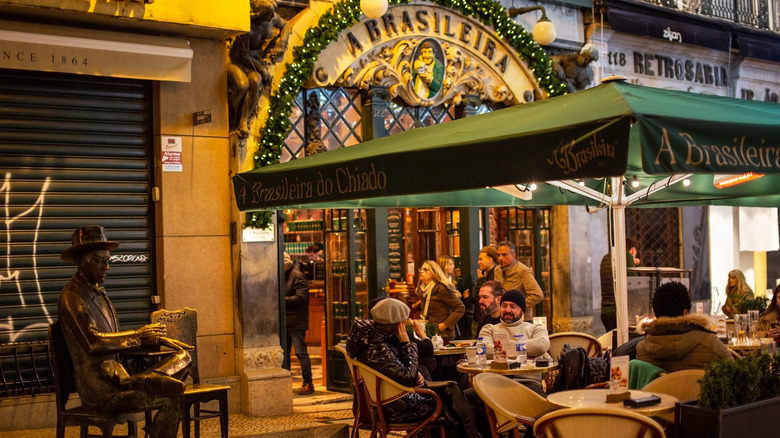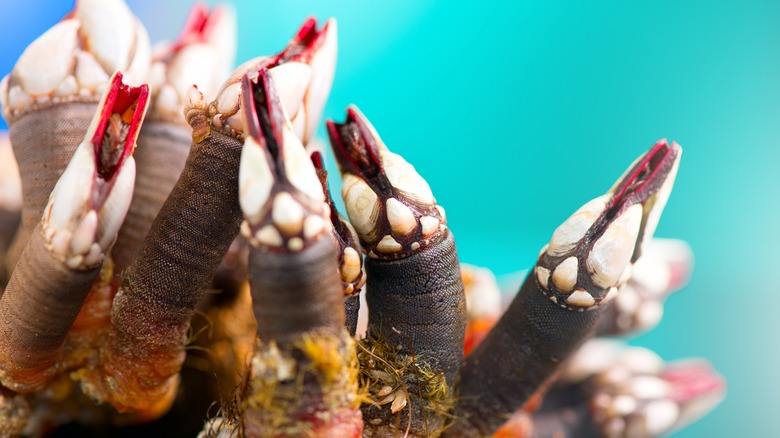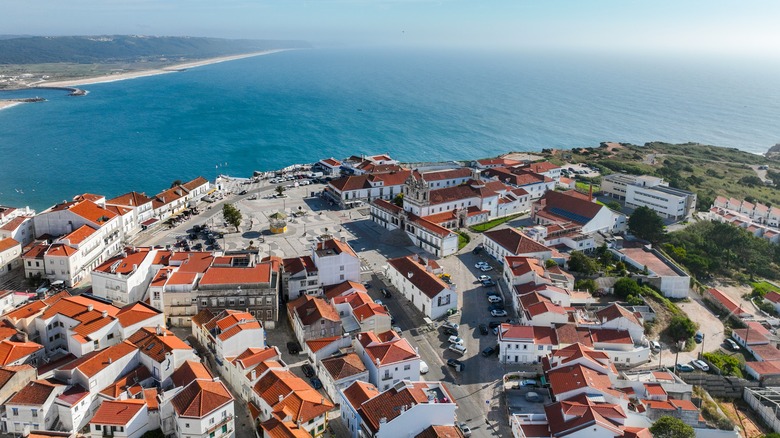Rick Steves Says His 'Sentimental Favorite' Food In Portugal Is Expensive But Well Worth It
Once content to live in the shadow of its flashier neighbor, Spain, Portugal has emerged as one of Europe's hottest destinations not just for travelers, but also retirees. Situated on the Atlantic coast of the Iberian Peninsula, this small, scenic country boasts an enthralling culture, along with rolling countryside, windswept beaches, and gorgeous towns — like this lesser-known city that's an enchanting destination with unmatched views.
Portugal is also famous for its terrific wines and unique, delectable cuisine. The country's maritime location guarantees that seafood plays a prominent role in its food, as seen in its national dish, bacalhau, a kind of salted cod often served in a hearty stew. Other popular Portuguese dishes include sardinhas assadas (grilled sardines), caldo verde (a soup made with veggies and sausage), and frango piri piri, a marinated chicken dish combining Portuguese and African traditions.
However, European travel guru Rick Steves doesn't mention any of these staples when dropping what he considers to be his "sentimental favorite" food in Portugal. He instead reaches for a deeper cut: barnacles (called "percebes" in Portuguese). While the uninitiated may turn up their noses at the idea of eating such sea creatures, in Portugal they're considered a delicacy, and one that locals will pay good money for.
Gooseneck barnacles are an unusual delicacy with a rich, briny flavor
Barnacles are crustaceans related to crabs, lobsters, and shrimps that come in over 1,400 species worldwide. They're typically covered with hard, calcareous plates and — using a natural cement they secrete — stick to rocks, pilings, buoys, the hulls of boats, seaweed, and even living creatures such as clams and whales. This cement is incredibly strong, making barnacles particularly tough to remove, earning them the moniker "crusty foulers."
These sometimes pesky, armored sea creatures also happen to be very delicious, especially the larger gooseneck barnacles found in the waters off of Portugal that also go by the name, "Lucifer's fingers." This variety is not only rare, but difficult to harvest, as the waters they inhabit are notorious for massive waves and strong currents. The fishers who go after percebes not only have to brave these adverse and potentially deadly conditions, but also dive for them at times, as the barnacles can grow in hard-to-reach underwater spots. The work to remove the creatures is time-consuming and arduous, which means that by the time the percebes are brought to shore, they fetch a high price — upwards of $75 per pound.
Percebes are usually boiled in salt water or steamed, though they can also be sauteed. To eat them, pinch the foot and pull the fleshy tube out of its skin-like casing. This is akin to getting the meat out of a lobster claw — just be careful not to squirt yourself with brine. You then rip off the claw and take down the succulent snack. Percebes taste somewhere between clams, squid, and lobsters, or perhaps a mix of all three. They're commonly eaten in the Algarve region in southern Portugal and pair perfectly with dry white wine or cold beer.
Soak up traditional charms in a traditional Portuguese beach town
Rick Steves fell in love with percebes while visiting the charming coastal town of Nazaré, which is probably best-known for its monster waves in the winter that attract some of the world's most daring surfers. The barnacles are sold in Nazaré as a street snack and act as a connection to older traditions that the town keeps alive.
Nazaré is a picturesque, laid-back fishing settlement famous for its colorfully-clad women who are said to wear seven skirts (these days it's more like three or four) along with chunky gold earrings. You can stroll along the beach and take in the folk music groups who play for visitors, as well as the fisher's nets you're likely to see stretched out on the sand.
While you're there, make sure to ride up the funicular railway to the Sítio neighborhood, which — in addition to sweeping views of the Atlantic — also features its own church, square, and memorial for famed Portuguese explorer Vasco de Gama. This district is so different from the city that Rick Steves says it "feels like a separate village," and a visit there with a hike down the hill is the perfect way to work up and appetite for a plate of fresh barnacles washed down with beer. For more of Portugal's seaside splendor, check out this hidden gem that's a perfect destination for beach lovers.


